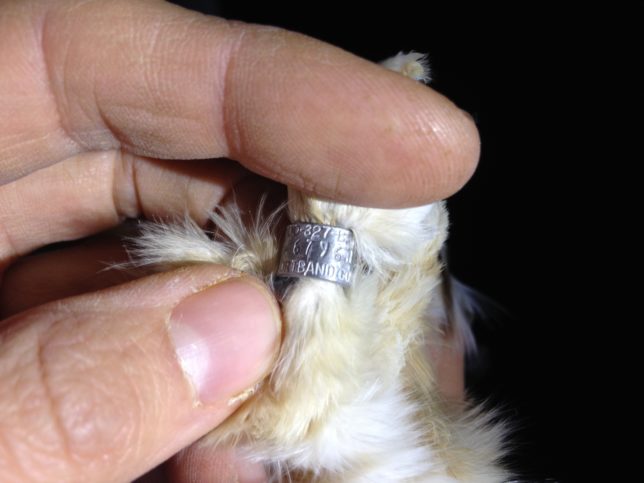Over the past two nights, we have captured 26 Northern Saw-whet Owls (‘saw-whets’) at the Point Labarbe owl-banding station, for a season total to date of 247 saw-whets. Thirteen of the 247 owls were already banded when we captured them. Because every band has a unique number, we are able to find out where and when each owl was initially banded. Two of these were banded by MSRW owl-banders in previous years – one at Point Labarbe in Fall 2019 and one at Cheboygan State Park in April 2018. The other 11 birds were banded by someone else, known as ‘foreign recaptures’ or ‘recoveries’. At the moment, we only have information on one of these – an owl originally banded at Stevens Point, WI in November 2019. Based on band numbers, many of the rest of the foreign recaptures likely are from Whitefish Point, about 80 miles northwest of Point Labarbe.

All of this leads to a discussion of why we are going to such great lengths to capture and band Northern Saw-whet Owls, our target species. Broadly speaking, we are seeking to shed light on saw-whet migration – patterns and timing – through the Mackinac Straits, Michigan, and North America. Before MSRW co-founder Ed Pike began capturing owls around the Mackinac Straits in the early 2000’s, saw-whets were thought to be a rare species in the area. His data show that a significant number of owls migrate through the straits (E. Pike. 2018. Fall Owl Banding at Point La Barbe, Mackinac Co., Michigan. Michigan Birds and Natural History 25(3): 156-162). Ed has shown that some owls are migrating straight south across the Upper Peninsula, some continue migrating south into Indiana, and some owls remain for months in eastern Upper Peninsula. Ed has also shown that some owls appear to use the same migration route in multiple years while other individuals use different routes during fall and spring migration. Not only does this data help us understand migration in Michigan, the MSRW banding stations are part of Project Owlnet, a continent-wide network of owl-banding stations.
Banding not only elucidates migration routes, but also contributes to our knowledge of owl populations. Saw-whet populations cycle through boom and bust years. This fall, we are capturing a record number of owls, almost all of which are hatch-year females, suggesting we are at the high point of their population cycle. In addition to all of this, data that we collect on each owl (measurements, age, sex) are valuable in and of itself, even if the owl is never recaptured again.
Species totals September 18th through October 4th (Sunday night):
Northern Saw-whet Owl: 247
Long-eared Owl: 2
Barred Owl: 1

